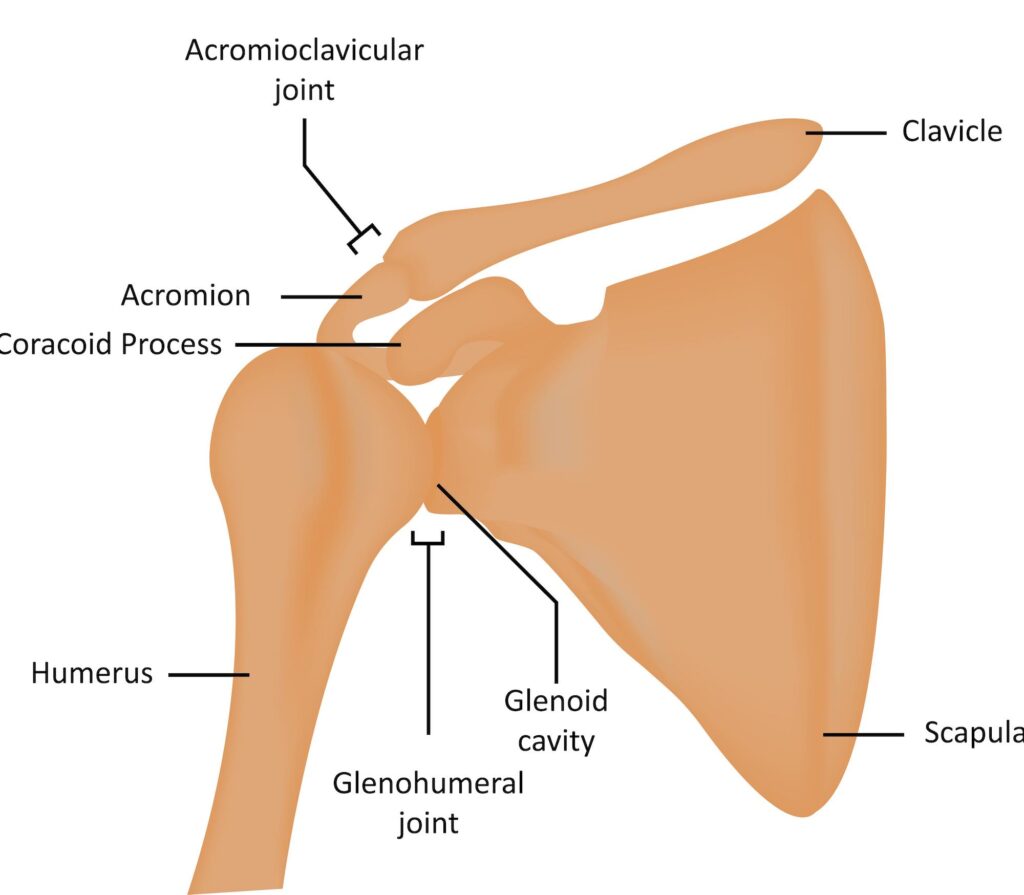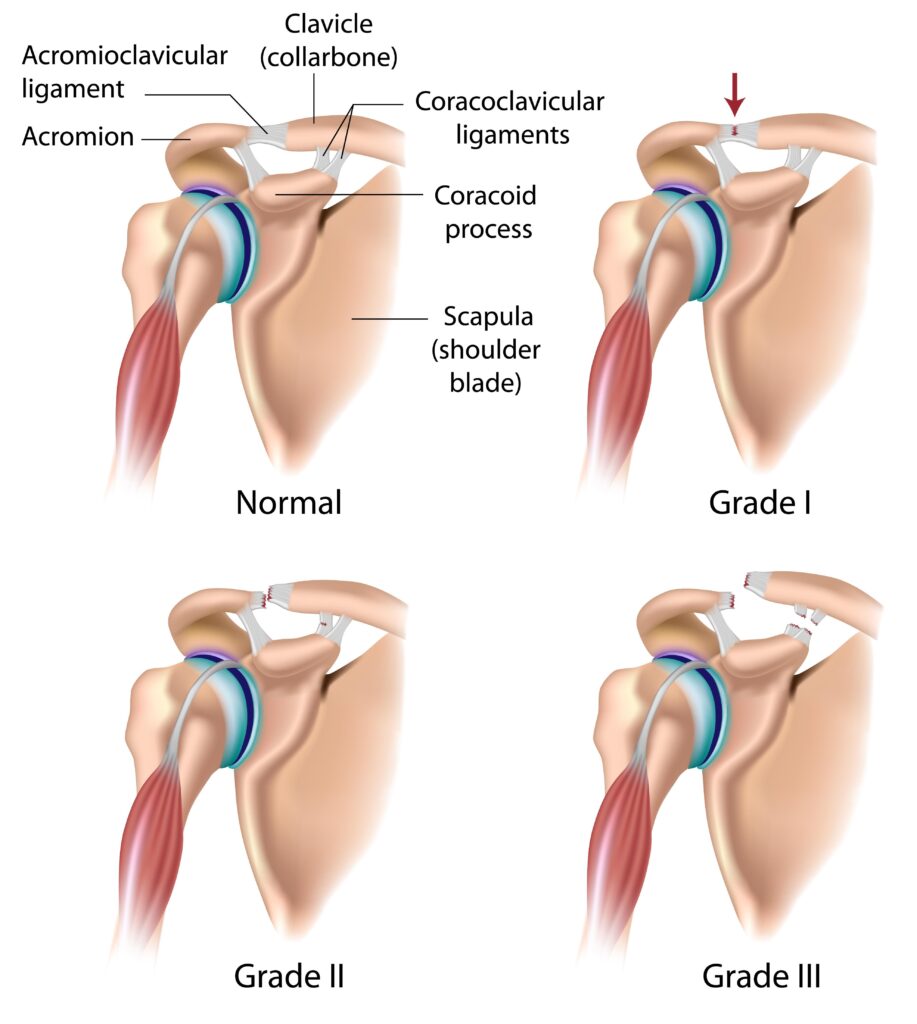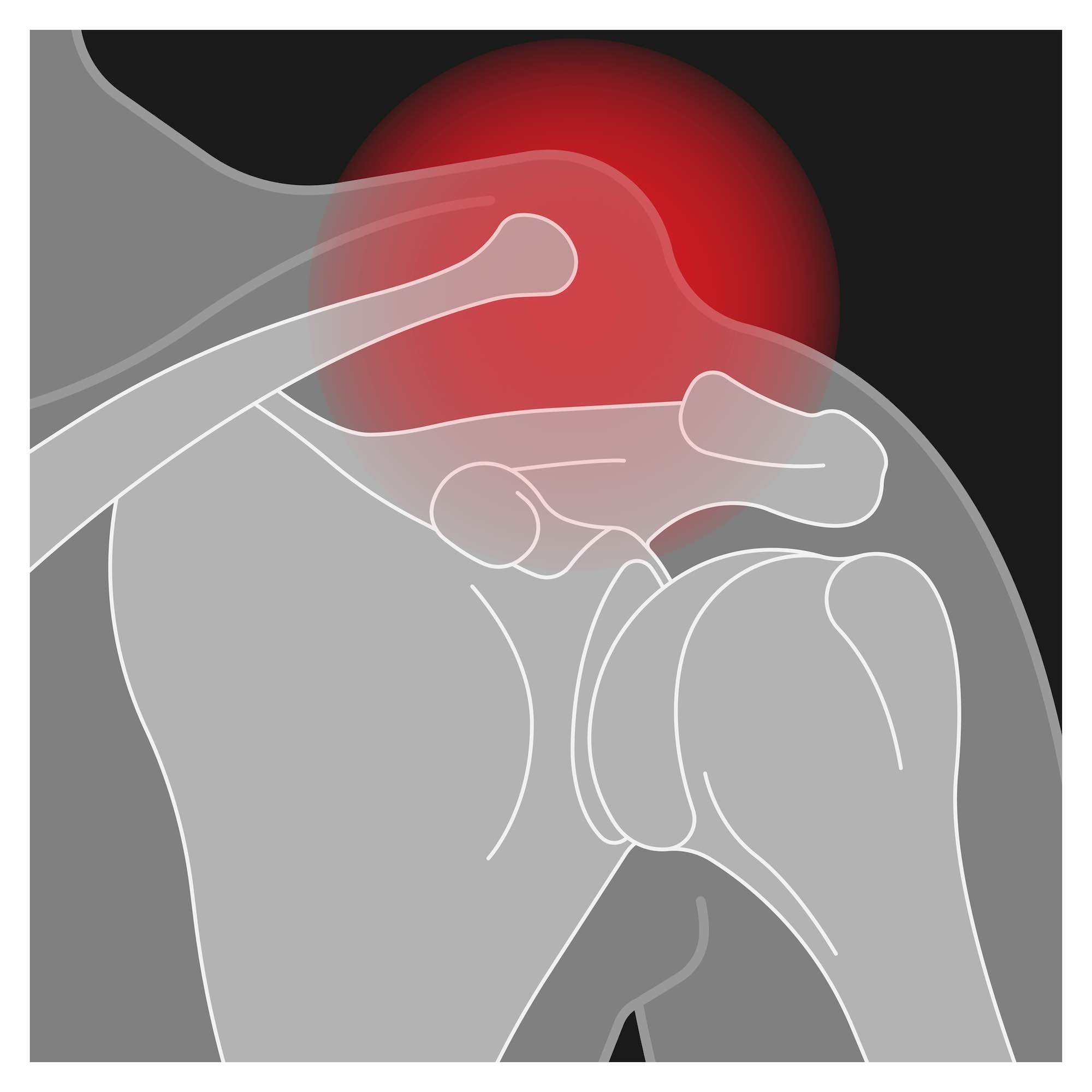The AC joint is a common site of injury, especially in athletes, and commonly referred to as a ‘shoulder separation.’ If you experience pain or instability in your AC joint, you may need treatment.
In this blog post, I will discuss some of the most common injuries to the AC joint and how they can be treated.
What is the AC joint, and what does it do?
The acromioclavicular or “AC” joint is located at the top of the shoulder and connects the clavicle (commonly referred to as the collarbone) and the scapula (part of the shoulder blade).

This joint, like most joints in the body, can move on each other because there is cartilage between the bones. The cartilage is the white tissue that exists between two bones. It acts as a buffer and allows the bones to move on each other smoothly. Over time, loss of this cartilage can become a source of trouble for people in the form of arthritis. AC joints can also be injured or dislocated during a fall off a bike or checking-type injury in hockey or football.
How can you tell if you have an AC joint injury or problem?
The most common symptom of an AC joint injury is pain or deformity at the top of the shoulder. AC joint injuries can also cause pain with activities that involve raising your arm over your head or placing your arm in a position where it is across your body.
Common conditions
While there are a lot of different things that can happen, the most common conditions of the AC joint are arthritis, fractures, and separations.
AC Joint arthritis is a condition that can develop over time due to the natural wear and tear of the cartilage. This can lead to pain and stiffness in the shoulder. AC Joint arthritis is more common in older adults, but it can also occur in younger people who have had an injury to the AC joint.
There are several different types of AC joint injuries, which I will discuss in more detail below.

Type I AC Joint Injury: This is the most common type of AC joint injury and is often seen in athletes who participate in contact sports, such as football or hockey. A Type I AC joint injury occurs when there is a sprain of the ligaments that connect the collarbone to the shoulder blade. This type of injury is also referred to as a sprained AC joint.
Type II AC Joint Injury: A Type II AC joint injury is a more severe injury that involves a partial tear of the ligaments that connect the collarbone to the shoulder blade. This type of injury is often seen in athletes who participate in high-impact sports, such as football or rugby. It can be very painful and may require surgery to repair.
Type III and above (IV-VI) AC Joint Injury: A Type III AC joint injury is one of the more severe types of AC joint injury and involves a complete tear of the ligaments that connect the collarbone to the shoulder blade. This type of injury is often seen in car accidents or falls from a great height.
Treatment for AC Joint Injuries
The treatment for AC joint injuries depends on the type of injury. For a Type I AC joint injury, the treatment may involve rest, ice, and over-the-counter pain medication. For a Type II AC joint injury, the treatment may involve physical therapy or injections. For a Type III AC joint injury, the treatment may involve surgery to repair or reconstruct the torn ligaments.
AC joint injuries can be painful and debilitating. If you think you may have an AC joint injury, it is important to see an orthopedic surgeon who specializes in the shoulder as soon as possible so that you can get the treatment you need.
With proper treatment, AC joint injuries can often be resolved successfully.
If you have any questions about AC joint injuries or would like to learn more about treatment options, please contact my office. I would be happy to help you!
